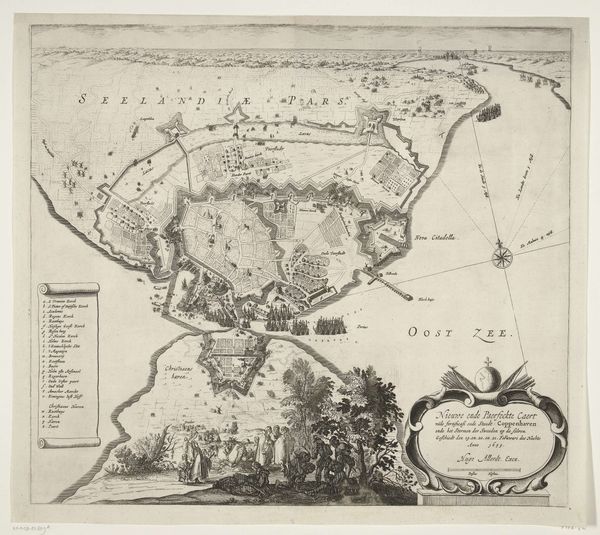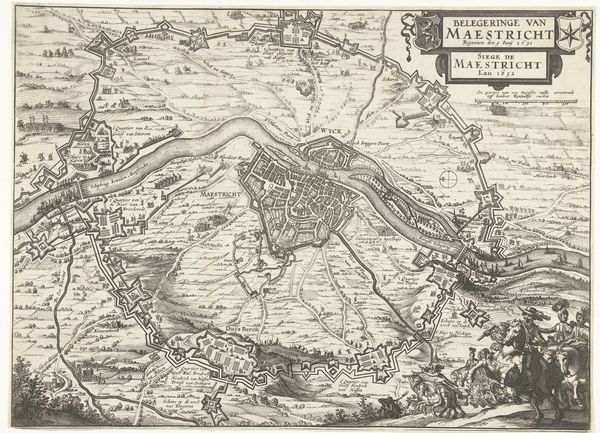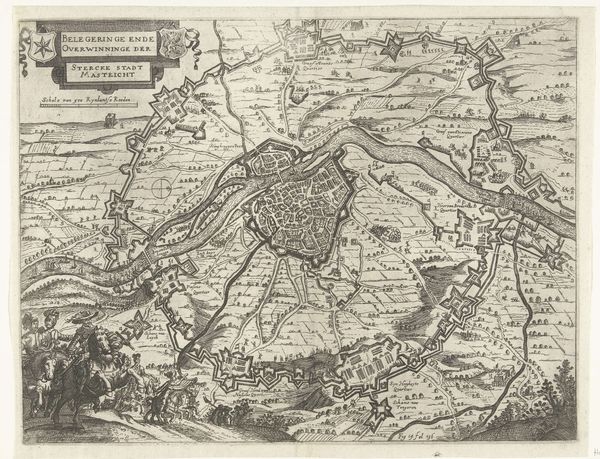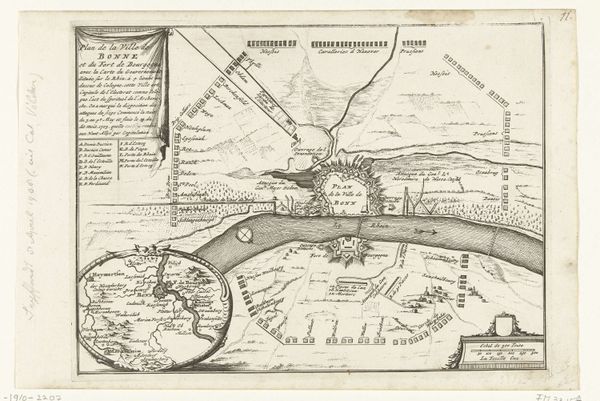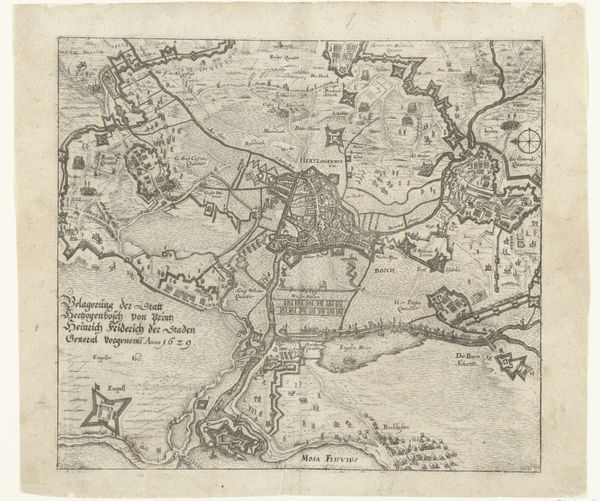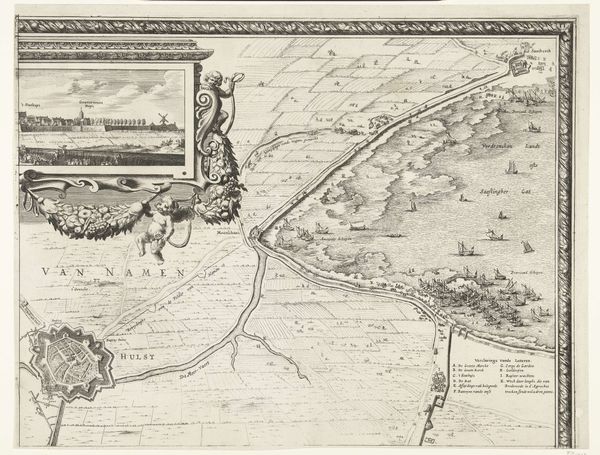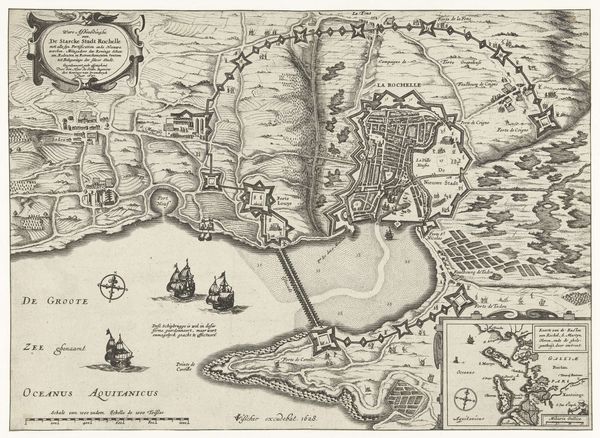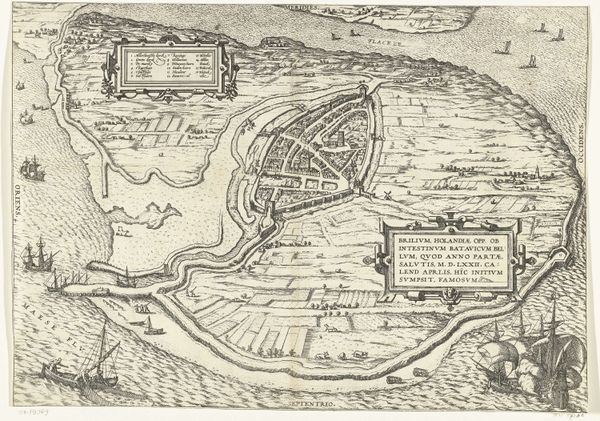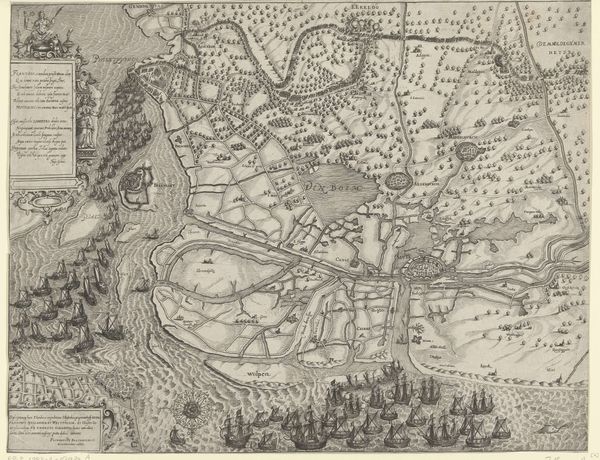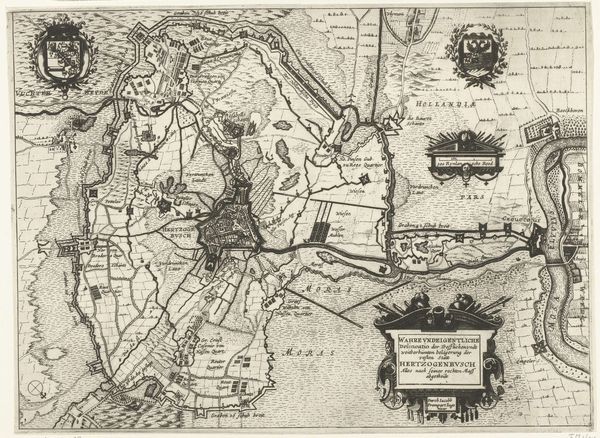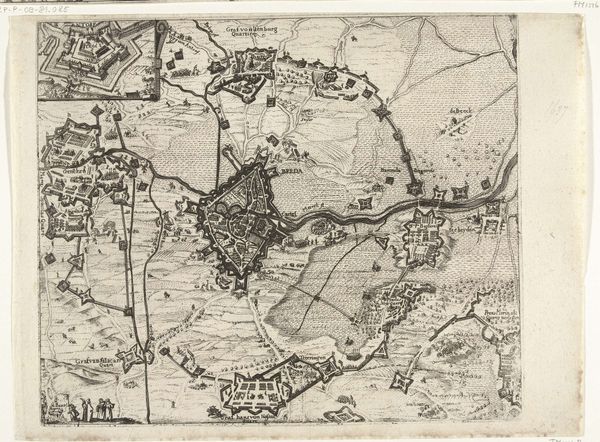
drawing, print, ink, engraving
#
drawing
#
baroque
#
pen drawing
# print
#
landscape
#
ink
#
cityscape
#
engraving
Dimensions: height 369 mm, width 420 mm
Copyright: Rijks Museum: Open Domain
This print, depicting Frederik Hendrik's siege of Hulst, was made in 1645 by Claes Jansz. Visscher. It is made using the intaglio printmaking technique of etching. The stark, linear quality of the image comes from the etcher’s need to incise lines into a metal plate; the ink settles into these grooves and is transferred to the paper. We can appreciate the labor involved by considering the sheer number of tiny lines and dots that create the image, and the artist’s mastery of the tools required. This was not a freehand drawing, but rather a controlled and repetitive process. The map itself is not just a feat of technical skill, but also a potent symbol of power. Note the highly regular fortification of Hulst, which would have required significant collective effort to build. Visscher's print is as much about the control of territory, and of people, as it is about the depicted landscape. It reminds us that materials, making, and context are key to understanding the full meaning of an artwork, challenging traditional distinctions between fine art and craft.
Comments
No comments
Be the first to comment and join the conversation on the ultimate creative platform.
